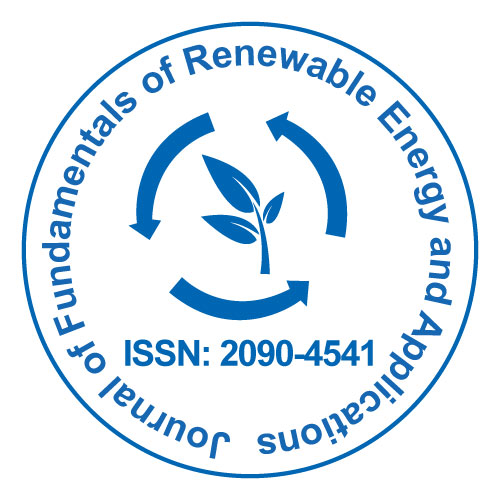
Journal of Fundamentals of Renewable Energy and Applications
Open Access
ISSN: 2090-4541

ISSN: 2090-4541
Opinion Article - (2023)Volume 13, Issue 1
Water mills are an additional source of hydroelectric energy. Water mills, which were popular until the Industrial Revolution, are enormous wheels that are typically found on the banks of moderately running rivers. Water mills generate energy that is used to power a variety of tasks such as grinding grain, chopping timber and producing hot flames to make steel.
In 1882, the first hydroelectric power plant in the United States was built on the Fox River in Appleton, Wisconsin. This plant supplied electricity to two paper mills and one residence. Controlling the flow of water is required to harvest energy from it. A huge reservoir is formed by damming a river to form an artificial lake or reservoir. Water flows via tunnels in the dam. The energy of the water flowing through the tunnels of the dam causes turbines to revolve. The turbines propel generators. Generators are power plants that generate energy.
Engineers control how much water flows through the dam. The intake system is the method utilized to control the flow of water. Engineers slow down the intake system by closing portions of the tunnels when less energy is required. A spillway aids the intake system during floods. A spillway is a structure that allows water to flow straight into a river or other body of water beneath a dam, bypassing all tunnels, turbines, and generators. Spillways protect the dam and the surrounding town. Spillways, which resemble lengthy ramps, are typically vacant and dry.
The most hydroelectricity is generated by large, fast-flowing rivers. The Columbia River, which forms part of the border between Washington and Oregon in the United States, is a large river that generates vast amounts of hydroelectric energy. The Bonneville Dam, one of several dams on the Columbia River, features 20 turbines and generates over a million watts of power each year.
Hydroelectric power facilities near waterfalls may also generate massive amounts of electricity. The energy of water crashing over the fall line is palpable. The hydroelectric facility at Niagara Falls, which straddles the boundary between the United States and Canada, is a well-known example of this. The hydroelectric energy supplied by Niagara Falls is divided between the states of New York and Ontario in Canada. Engineers at Niagara Falls cannot stop the falls from falling, but they may severely limit the input and control the amount of water that falls.
The massive Three Gorges Dam, which spans the Yangtze River in China, is the world's largest hydroelectric power plant. It stands 185 metres tall (607 feet) and is 115 metres thick at the base. It will have 26 turbines and will be capable of producing more than a billion watts of power. Although the Three Gorges Dam is operational, engineers are continually working to improve the system. The project is being expanded with additional turbines and generators.
Since electricity serves one of our basic needs today, the applications of hydroelectric power are numerous. Hydropower has been utilised for millwheels and early industrial gear for ages. Hydropower is now used to create electricity. In fact, hydropower was used to create more electricity in the United States than any other renewable energy source. The following are the most typical uses of hydropower in most developed countries:
• Its principal application is the creation of clean electricity.
• Because of the inexpensive and surplus energy that hydro sites produce they can be attractive areas to establish a significant manufacturing operation.
• Another beneficial application of hydropower is to provide recreational amenities such as swimming, fishing, and boating.
• The use of hydropower electricity in flood risk management
• The system is utilised to enable agricultural irrigation.
Citation: Chon K (2023) Applications of Hydro Power in Terms of Hydro Electric Currents. J Fundam Renewable Energy Appl. 13:305.
Received: 02-Jan-2023, Manuscript No. JFRA-23-23365; Editor assigned: 06-Jan-2023, Pre QC No. JFRA-23-23365 (PQ); Reviewed: 27-Jan-2023, QC No. JFRA-23-23365; Revised: 03-Feb-2023, Manuscript No. JFRA-23-23365 (R); Published: 10-Feb-2023 , DOI: 10.35248/2090-4541.23.13.305
Copyright: © 2023 Chon K. This is an open-access article distributed under the terms of the Creative Commons Attribution License, which permits unrestricted use, distribution, and reproduction in any medium, provided the original author and source are credited.